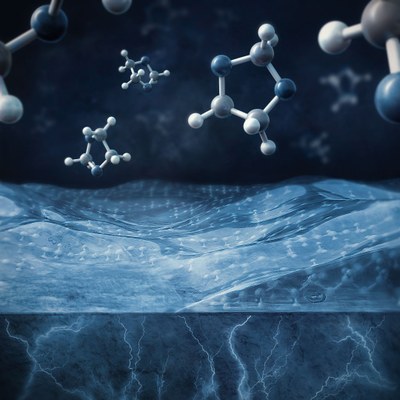Innovation: ENEA focusses on nanomaterials for lithium-sulphur batteries
30/1/2020
 A new direction emerges for research at ENEA, to render lithium-sulphur batteries competitive as a product compared to lithium-ion batteries, both in terms of production cost and performance.
A new direction emerges for research at ENEA, to render lithium-sulphur batteries competitive as a product compared to lithium-ion batteries, both in terms of production cost and performance.
The new storage batteries look set to be less costly (sulphur is an oil-industry by-product), and also to weigh less and (weight for weight) to store nearly twice as much energy (300 Wh/kg).
The objective pursued by ENEA’s researchers is to tackle the main criticality that has impeded entry of lithium-sulphur batteries into the marketplace − i.e. limited life.
During the discharge process, sulphur, which makes up the cathode, produces intermediate compounds (lithium polysulphides) which are soluble in the electrolyte; hence, the cathode, as time goes by, literally dissolves in the electrolyte itself.
“This phenomenon triggers a cyclical process that leads to consumption of the current unaccompanied by accumulation of energy, and that induces an irreversible loss of the active material (sulphur), a rapid downturn in specific capacity as the number of cycles increases, and a less marked charge-discharge reversibility”, explains ENEA researcher, Mariasole Di Carli, of ENEA’s “Sviluppo Processi Chimici e Termofluidodinamici per l’Energia” (chemical and thermo-fluid dynamic processes development for energy) laboratory.
The key to augmenting reversibility of the conversion reaction (i.e. the number of charge-discharge cycles of lithium-sulphur batteries) might consist in use at the anode of nanoparticles of carbonaceous material. Given their large surface area, these particles are able to trap the lithium polysulphides − compounds that hinder correct battery functioning in that they greatly lower the performance ratings.
“In our laboratories we shall synthesize carbonaceous nanomaterials suitable for use in lithium-sulphur batteries. We shall study electrolytic solutions capable of efficaciously transporting lithium ions, and we shall investigate the interaction between electrodes (anode and cathode) and the electrolyte and the behaviour of complete lithium-sulphur cells.
We shall thus arrive at a full understanding of the factors behind the chemistry of these innovative batteries”, says ENEA’s electrochemical storage expert, Pier Paolo Prosini. During the final stage of the project, the researchers shall produce and test complete batteries (with nominal energy of up to 1.0 Wh), using equipment capable of ensuring reproducibility of the product, and therefore produce a series of complete batteries. At a later stage, in order to enhance performance, certain construction parameters shall be altered, accompanied by analysis of the contribution and impact of these variations.
“What with the enormous increase in the storage capacity of lithium-sulphur batteries, we may expect to see electric cars capable of travelling ever greater distances on a single charge. In 2022, this industry might gain 5% of the entire auto market in line with the increase in the number of circulating electric cars. However, there are many other high energy density applications that might benefit from this new generation of batteries (e.g. accumulation of energy from renewable sources, or increased run times for smartphones, tablets and computers and, generally speaking for all electronic devices)”, Di Carli added, also remarking,
“In any case, the aviation market could be greatly impacted, since drones and electricity-driven aircraft require increasingly powerful, durable batteries, with high storage capacities”. The benefits don’t end here! Environmentally speaking, manufacture of these new electro-chemical accumulators presents with a low impact and low greenhouse gas emissions levels. Furthermore, these batteries contain no critical materials or heavy metals, thus facilitating disposal.
This new direction for research follows on from the recent ENEA patent for lithium-sulphur batteries using the glue, Vinavil, as water-soluble (aqueous) bonding agent. The use of this bonding agent does away with recourse to a volatile organic solvent (such solvents are also termed VOCs) when preparing the electrodes. VOCs are a potential threat to human health and the environment. The main new aspect of this invention regards limiting to the greatest possible extent the quantity of carbon present on the cathode (the positive electrode) and depositing it, layer after layer, directly on the separator by means of the polymer bonding agent: this strategy considerably augments the energy density of this device while reducing the weight of the cell.
The second innovation vis-à-vis the other types of lithium-sulphur batteries is linked to the fact that the sulphur is added to the battery in liquid form. This makes for high availability of the sulphur. Indeed, during the first cycle of the battery, the capacity approaches the theoretic capacity value.
For further information:
Pier Paolo Prosini - Laboratorio Sviluppo Processi Chimici e Termofluidodinamici per l’Energia, pierpaolo.prosini@enea.it
Mariasole Di Carli - Laboratorio Sviluppo Processi Chimici e Termofluidodinamici per l’Energia, mariasoledicarli@enea.it
